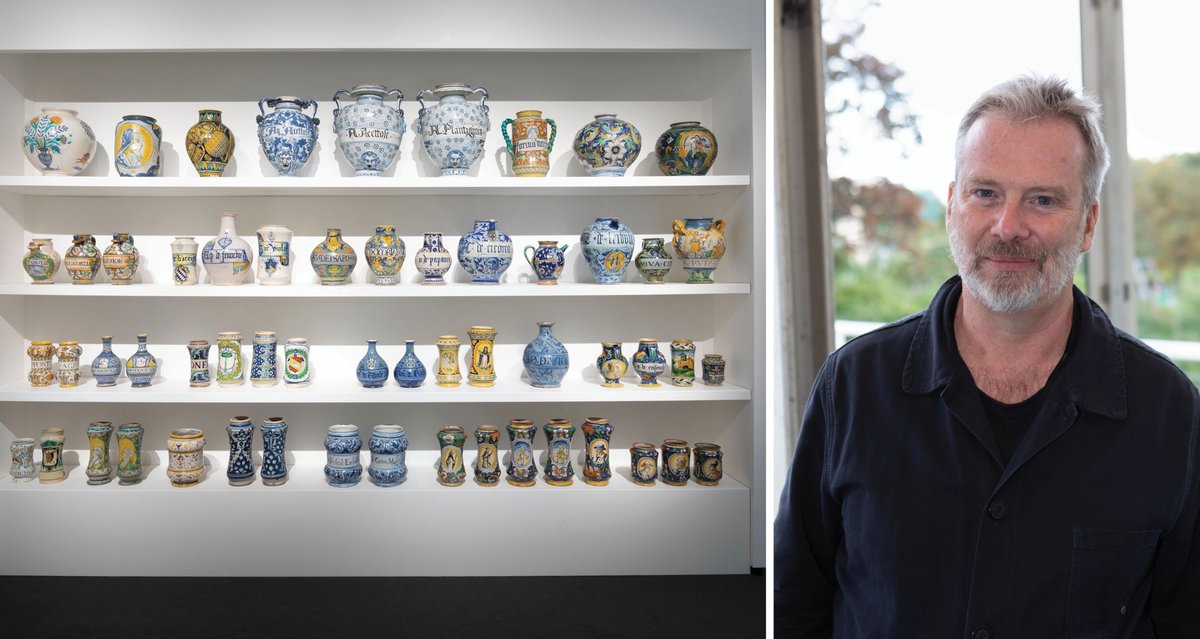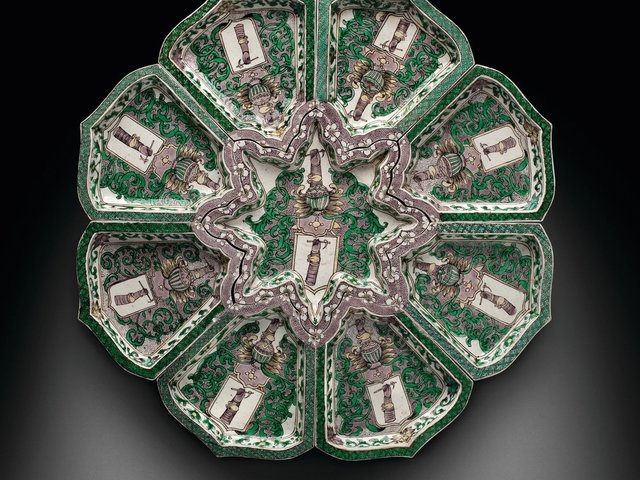“Now is the perfect time to investigate undervalued objects,” says Luke Syson during a tour of Stand Out, his curated section of nine stands at Frieze Masters, which focuses on works that have escaped the traditional “art reference”—or reverence—of being framed and hung on a wall. It is a natural approach for Syson, the director of the Fitzwilliam Museum in Cambridge, a treasure house of Asian and European decorative and fine art. The concept also springs from the current climate of the pandemic: lockdowns “have changed the way we live with objects”, he suggests. “We have become sensitised to how the artistic and the functional blend in our domestic surroundings.” There has also been, he says, a “fundamental challenge to our Eurocentric view of art, which has seen the dismantling of traditional hierarchies and a blurring of boundaries”. Here, Syson picks five pieces at the fair that embody these themes, revealing their unexpected glamour and abstract qualities.
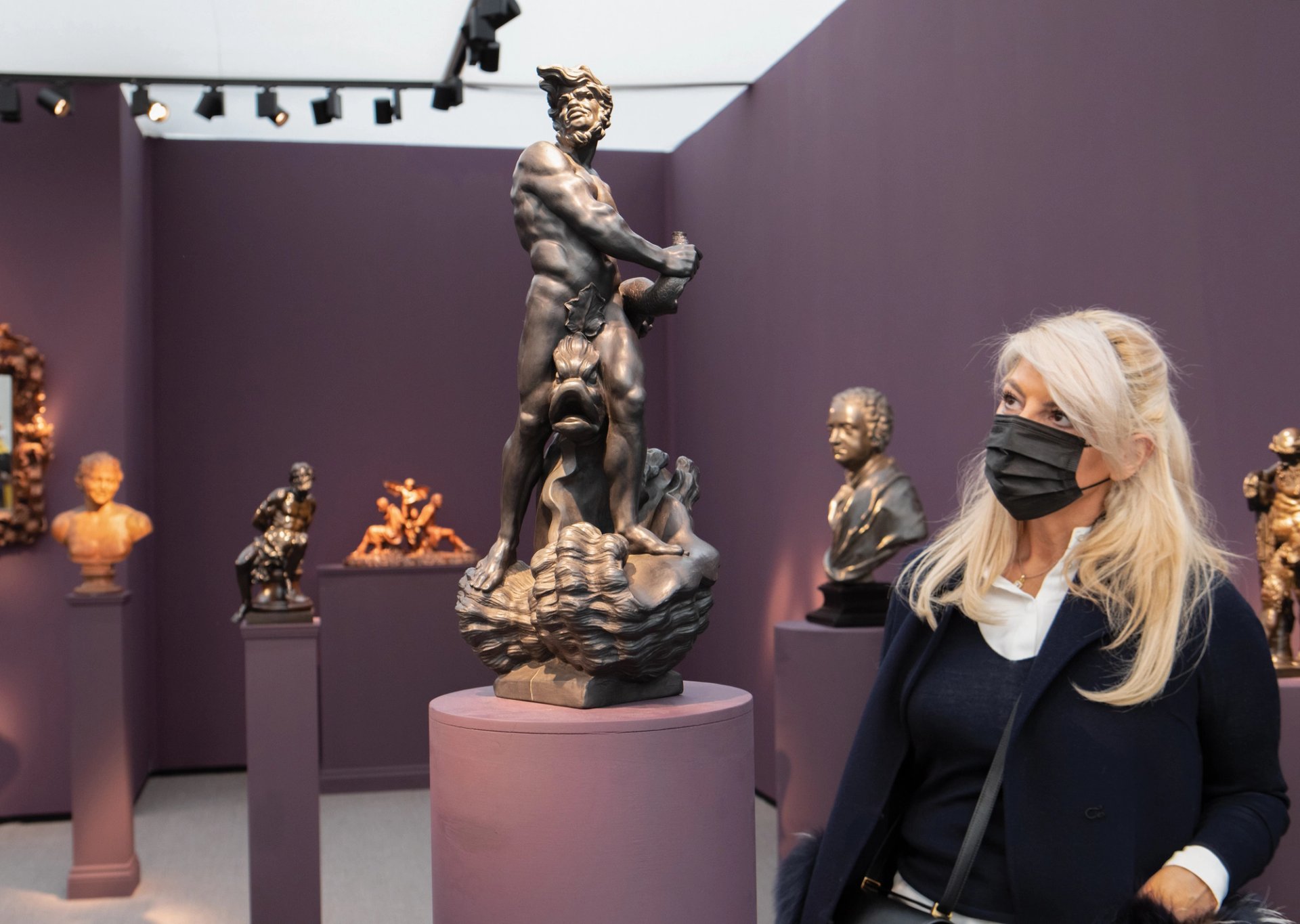
Photo: David Owens
Triton (1770-76), Josiah Wedgwood and Thomas Bentley, after Gian Lorenzo Bernini. Etruria, Staffordshire
Tomasso
“This intriguing object looks like it is carved from stone or bronze, but it is in fact a type of stoneware that Wedgwood invented. Historically, this would have been exhibited in the ceramic section—not alongside an array of dynamic small-scale sculptural pieces as it is here. It combines Wedgwood’s extraordinary modernity—the medium was completely innovative, and people are still floored by what on earth it is—with his respect for tradition [the piece represents Bernini’s Triton from the Fountain of the Moor in Rome’s Piazza Navona].”
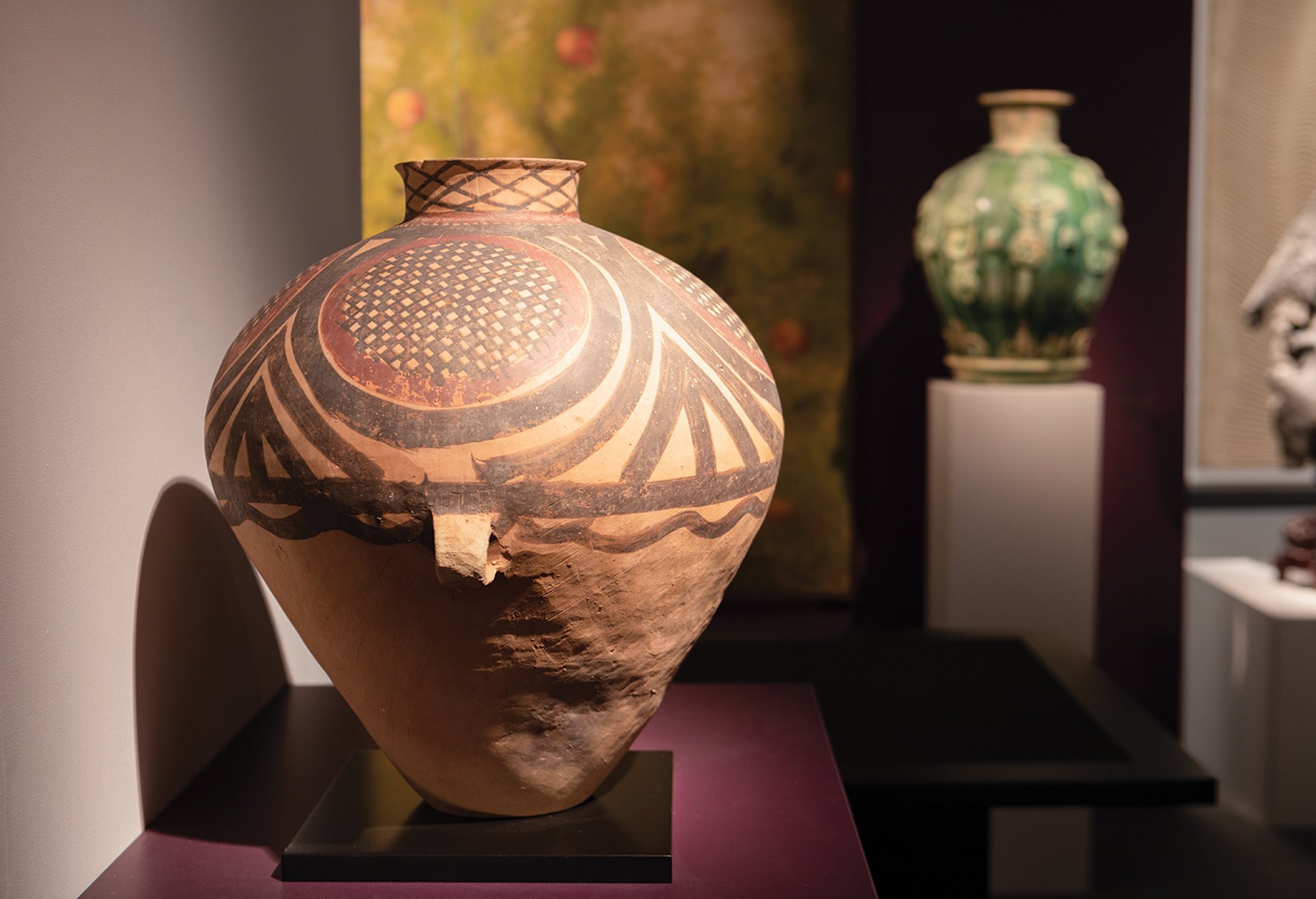
Photo: David Owens
Polychrome pottery jar (fourth-third millennium BC). Majiayao culture, China
Gisèle Croës—Arts d’Extrême Orient
“I am no expert in Chinese craft, but this wonderful Neolithic pot—made in a developing agricultural region of the Yellow River—fascinates me as it was fashioned by a culture that was stable, as opposed to nomadic, and is therefore part of that sense of how you make a home. It shows that pattern-making and the addition of ornament are fundamental human impulses. And such objects also often provide us with the only evidence that we have of very early cultures and makers. They provide clues to the behaviours and identities of people that are missing from our usual world histories.”
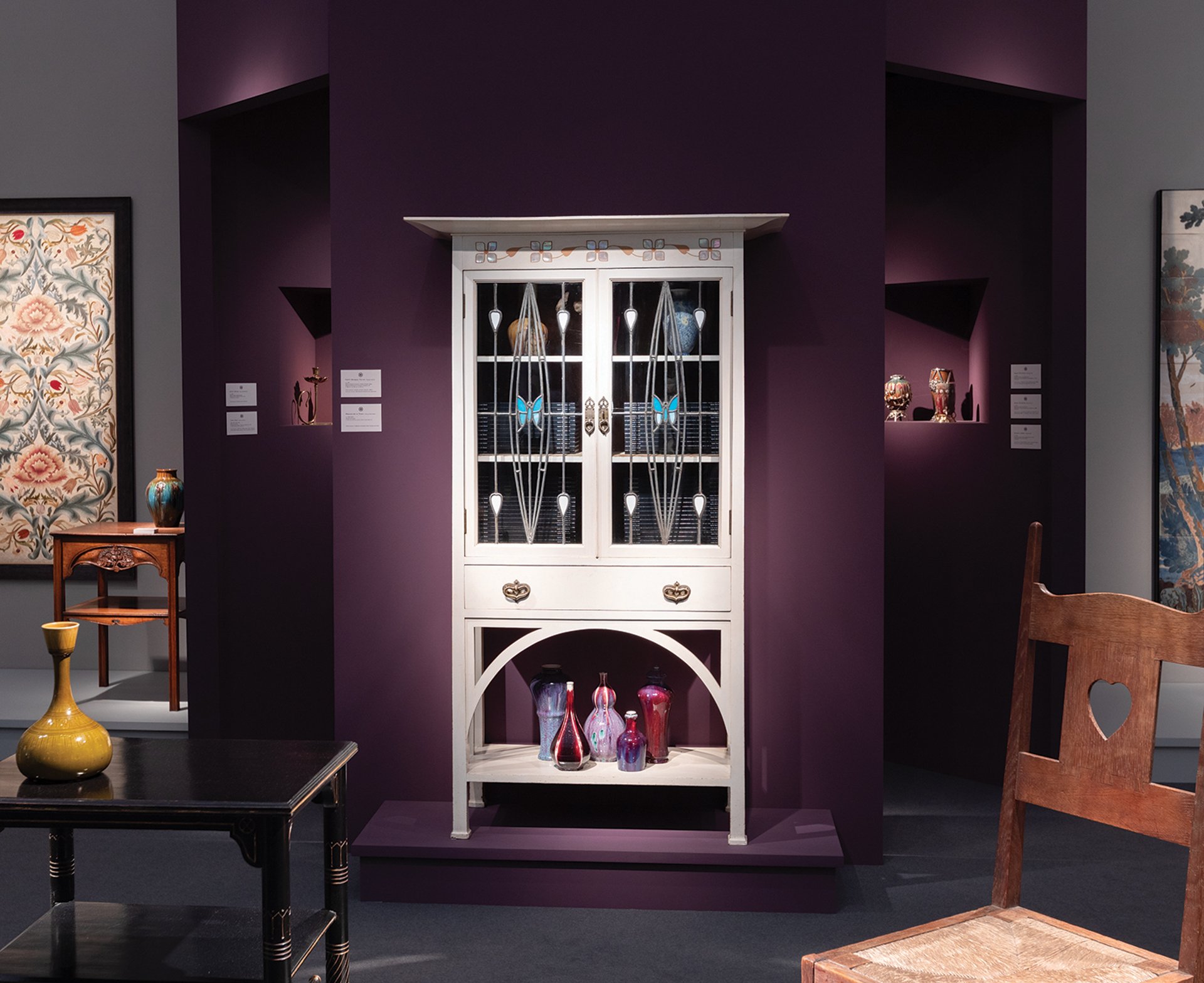
Photo: David Owens
Ernest Archibald Taylor display cabinet (1901). Glasgow
Oscar Graf Gallery
“Among these tempting, great pieces of 19th-century furniture is this marvellous Glasgow school of design piece by Taylor, who was just a few years younger than Charles Rennie Mackintosh and inhabits the same visual domain. These artists were inspired by Asian practice to find the simplicity, lucidity and purity that nature provides. Such furniture completely strips back the clutter of 19th-century ornament, while at the same time being responsive to Britain’s place in internationalism, particularly the schools of Paris and Vienna.”
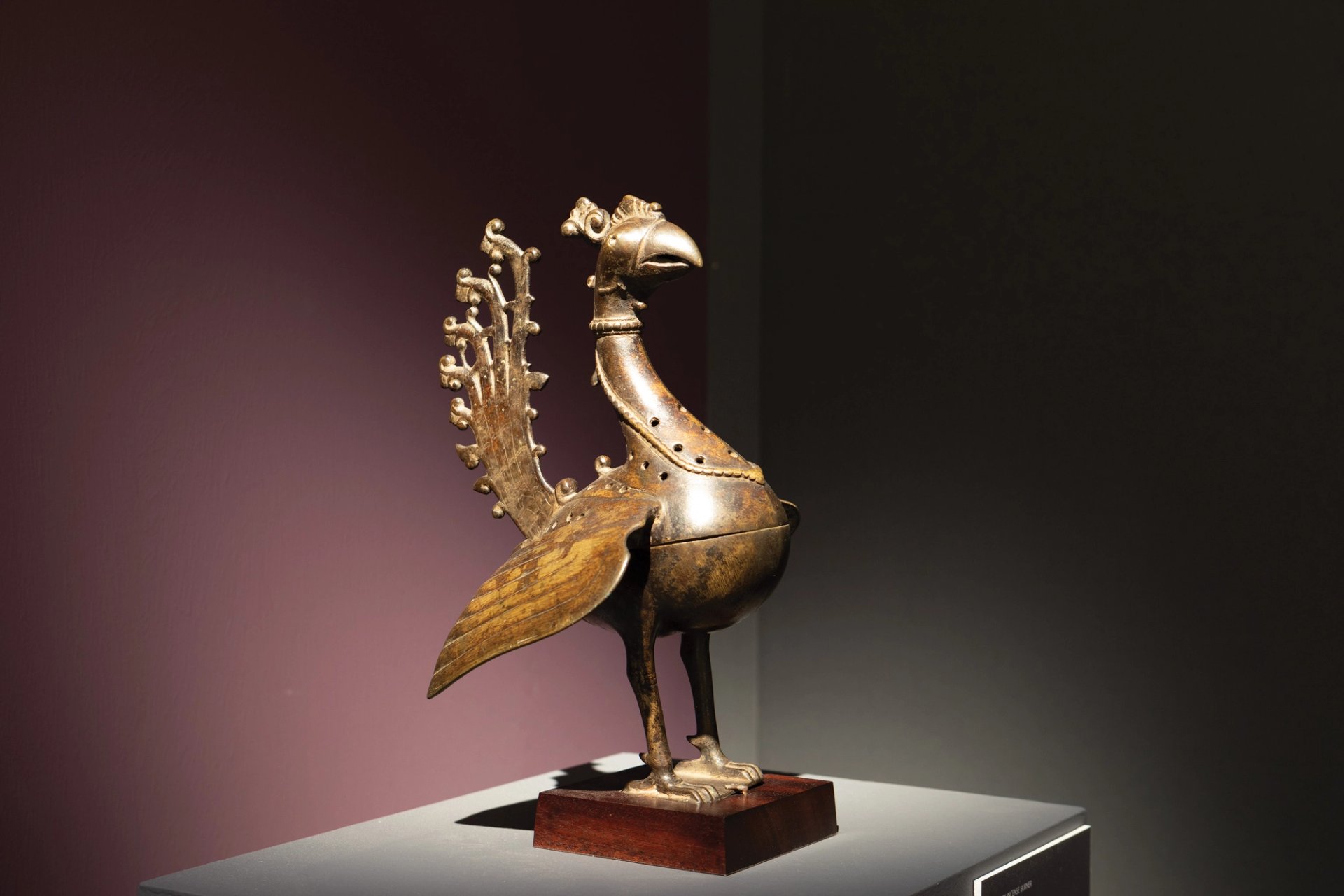
Photo: David Owens
Peacock incense burner (late 15th-early 16th century). Deccan plateau, India
Prahlad Bubbar
“This incense burner, in the form of a beautiful copper alloy peacock, was made for the Islamic courts of Deccan India. What I love about it is how the craftsmanship of the metalwork makes whatever it represents special. It adds an otherworldly element to what it describes—the majesty and poetry is intensified when you make a living beast. It also provides different sensual experiences: the smell of burning, wafting incense combined with metal, which is mysteriously cool to the touch. It feels part of recovering a sense of life, too—objects, such as this peacock, enshrine this quality.”
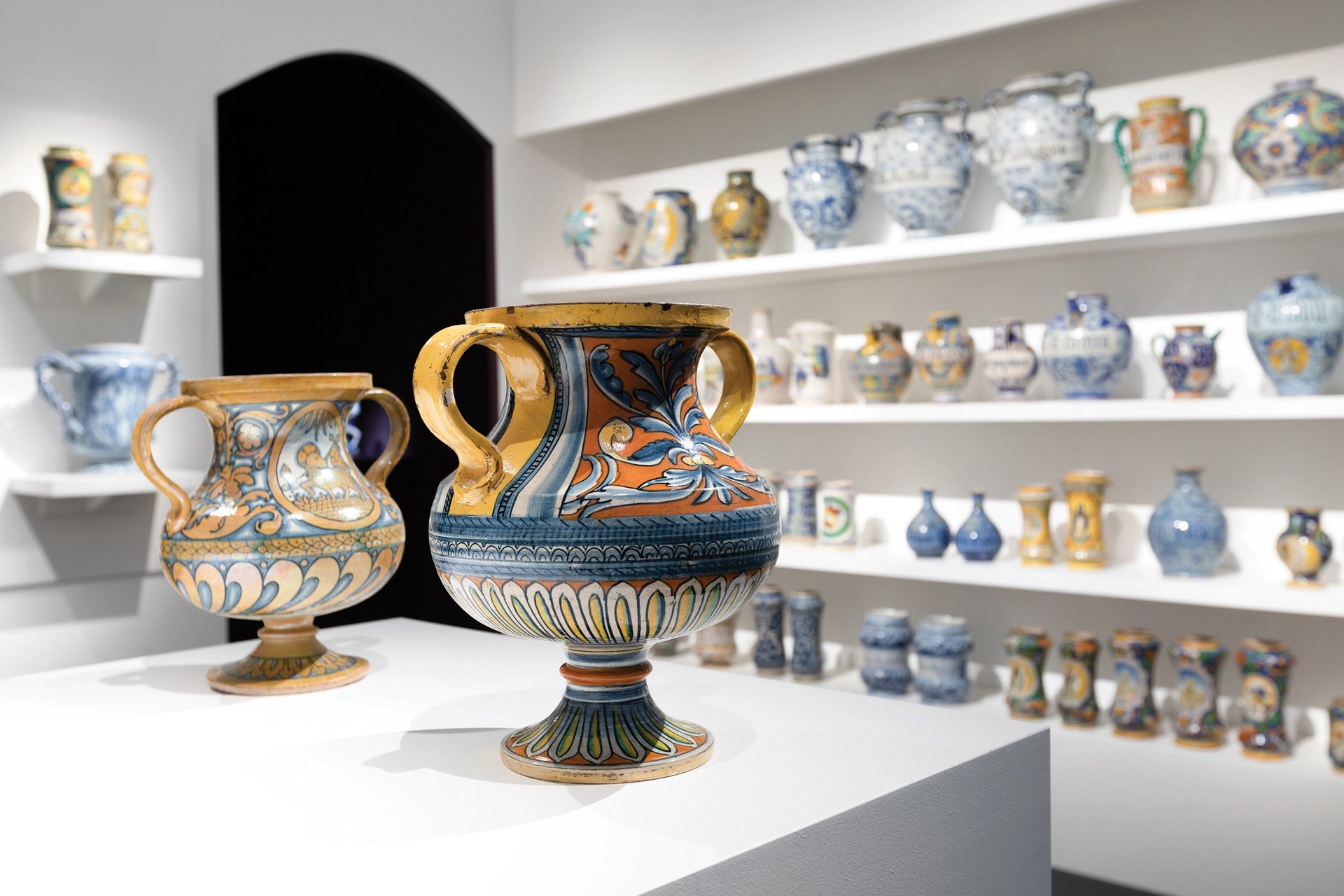
Photo: David Owens
Renaissance earthenware pharmacy jars (15th-17th century). Italy and France
Raccanello & Leprince
“The 100 or so Renaissance pharmacy jars on this stand are laid out in such a way as to invoke a Renaissance pharmacy, but at the same time each object has its own integrity. These vivid decorated jars provided customers with joy and confidence as they went about their shopping, looking for health-giving elixirs and potions, or treats. They give a dynamic sense of lives lived—just by sitting on a shelf. Some of the earliest here are 15th-century, most are 16th-century, and a few are 17th-century, Italian and French. We are presented with their exuberant frontal view, then when taken down to the counter their function would be revealed. Unlike domestic objects they represent the seduction of retail.”


